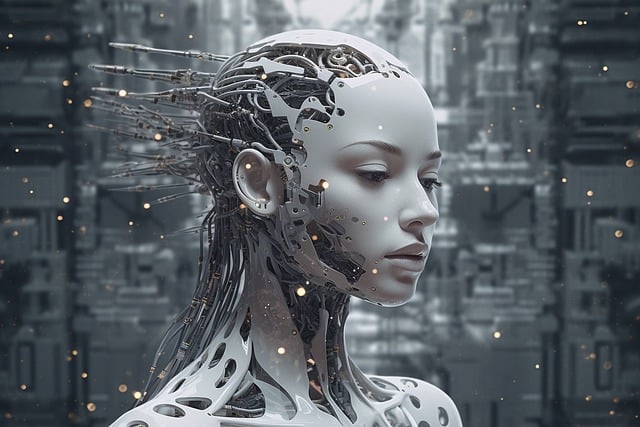Table of Contents
Benefits of Working Together
Collaboration in the realm of technological advancements brings about a synergy that fosters innovation and progress. When individuals with diverse expertise pool their strengths, the outcome transcends what each could achieve alone. The blending of different perspectives and skills results in a holistic approach to problem-solving and can lead to groundbreaking solutions.
Furthermore, working together cultivates a dynamic exchange of ideas, sparking creativity and out-of-the-box thinking. This collective intelligence not only accelerates the pace of development but also ensures that a wide range of viewpoints is considered in the decision-making process. In the fast-paced world of technological evolution, harnessing the power of collaboration is instrumental in driving forward advancements that shape our future.
History of Automation
The concept of automation can be traced back to ancient civilizations where simple tools and machines were used to streamline tasks. However, it wasn’t until the Industrial Revolution in the 18th century that automation took a significant leap forward. The invention of the steam engine and mechanized production processes revolutionized industries, paving the way for the modern era of automation. With the advent of electricity and the assembly line in the 19th and 20th centuries, automation became more sophisticated, leading to increased efficiency and productivity in manufacturing sectors.
Artificial Intelligence (AI) has been a driving force behind the evolution of automation in recent years. The ability of machines to learn from data, make decisions, and perform tasks that typically require human intelligence has revolutionized various industries. From self-driving cars to virtual assistants, AI has demonstrated its potential to automate complex processes and enhance productivity. As technology continues to advance, the history of automation unfolds with new innovations and possibilities on the horizon.
Key Players in Automation
Key players in automation are numerous, with technology giants such as Google, Amazon, and Microsoft leading the forefront. These companies have heavily invested in developing cutting-edge AI technologies that drive automation processes across various industries, from manufacturing to healthcare. Their robust research and development initiatives have positioned them as key influencers in shaping the future of automation.
Moreover, startups like UiPath and Automation Anywhere are also making significant strides in the automation space, offering innovative solutions that cater to the specific needs of businesses looking to streamline their operations. These agile and dynamic players bring fresh perspectives and disruptive technologies to the table, challenging the status quo and pushing the boundaries of what is possible with automation.
• Google, Amazon, and Microsoft are technology giants leading automation advancements
• Heavy investment in AI technologies for automation across industries
• Research and development initiatives shaping the future of automation
• Startups like UiPath and Automation Anywhere offer innovative solutions for businesses
• Agile players challenging status quo and pushing boundaries of automation possibilities
Challenges Faced in Collaboration
Collaboration in the field of automation often presents certain challenges that need to be addressed for successful implementation. One significant issue is the lack of alignment in goals and objectives among team members. This can lead to conflicting strategies and hinder the progress of collaborative projects. In addition, communication breakdowns can arise due to different perspectives and approaches taken by individuals involved in the collaboration process. These misunderstandings can impede decision-making and overall efficiency in the project.
Moreover, the complexity of integrating various technologies and systems poses a major challenge in collaborative efforts within the realm of automation. Ensuring seamless interoperability among different platforms and tools requires meticulous planning and implementation. The technical intricacies involved in merging disparate systems can result in compatibility issues and system failures if not carefully managed. As a result, collaboration in automation may face hurdles in achieving smooth integration and functionality across multiple components.
Ethical Considerations
Ethical considerations play a crucial role in the realm of automation and collaboration. As technology continues to advance rapidly, questions surrounding data privacy, algorithm biases, and the potential misuse of Artificial Intelligence (AI) have come to the forefront. Stakeholders must navigate the ethical landscape to ensure that collaborative efforts are conducted responsibly and with transparency.
Transparency in decision-making processes, accountability for algorithmic outputs, and safeguarding user privacy are paramount in fostering trust within collaborative ventures leveraging AI. Striking a balance between innovation and ethics requires a comprehensive understanding of the implications of automated systems on individuals, society, and the environment. Adhering to ethical principles not only mitigates risks but also paves the way for sustainable and inclusive collaborations in the ever-evolving landscape of automation.
Impact on Job Market
The integration of Artificial Intelligence (AI) and automation technologies in various industries has significantly impacted the job market. As AI systems become more advanced and capable of performing tasks that were once carried out by humans, there is a growing concern about the potential loss of jobs. Many fear that automation will lead to mass unemployment as machines take over roles traditionally held by human workers.
Despite the negative outlook on job displacement, some experts argue that automation will also create new job opportunities in emerging fields related to AI and technology. As industries adapt to the changing technological landscape, there is a growing demand for skilled workers who can develop, maintain, and operate AI systems. While some roles may become obsolete, automation also has the potential to drive innovation and create new avenues for employment in the future.
Technological Advancements
In the rapidly evolving landscape of technological advancements, Artificial Intelligence (AI) stands out as a key player. AI has revolutionized various industries by enabling machines to learn from data, adapt to new information, and perform tasks that typically require human intelligence. Its applications span across areas such as healthcare, finance, transportation, and more, demonstrating its versatility and potential to drive innovation.
Moreover, the integration of AI with other cutting-edge technologies like Internet of Things (IoT), big data analytics, and robotics has further expanded the possibilities for enhanced automation and efficiency. These synergies empower businesses to optimize processes, make data-driven decisions, and deliver personalized experiences to users. With continuous advancements in AI algorithms and capabilities, the future holds promises of even more sophisticated solutions that can revolutionize how we interact with technology and the world around us.
Examples of Successful Collaborations
In the realm of automation, noteworthy successful collaborations have emerged, showcasing the power of synergy between diverse entities. A prominent instance involves the integration of Artificial Intelligence (AI) algorithms with robotic systems in manufacturing plants. This partnership between cutting-edge technology and industrial machinery has significantly enhanced production processes, streamlining operations, and increasing output efficiency. Through this collaboration, AI algorithms analyze real-time data to optimize production schedules, predict maintenance requirements, and minimize downtime, leading to substantial cost savings for manufacturers.
Another exemplar of successful collaboration lies in the fusion of IoT (Internet of Things) devices with AI-driven software in the healthcare sector. By connecting medical devices and sensors to intelligent algorithms, healthcare providers can remotely monitor patients’ vital signs, detect anomalies, and prompt timely interventions. This harmonious blend of IoT and AI not only revolutionizes healthcare delivery by enabling proactive patient care but also empowers medical professionals with valuable insights for personalized treatment strategies.
Future Outlook
As technology continues to advance at a rapid pace, the future outlook for automation appears promising. Artificial Intelligence (AI) is expected to play a pivotal role in shaping the way businesses collaborate and operate. With AI becoming increasingly sophisticated, we can anticipate more streamlined processes, improved efficiency, and enhanced decision-making capabilities across various industries.
The integration of AI into automation systems is likely to lead to greater automation adoption rates and increased levels of collaboration between humans and intelligent machines. As AI algorithms become more adept at handling complex tasks and learning from data, the potential for innovation and growth in automation is vast. Organizations that embrace these technological advancements are poised to stay ahead of the curve and drive transformative changes in the way we work and interact with technology.
Industry Applications
The industry applications of Artificial Intelligence (AI) have witnessed remarkable growth in recent years across various sectors such as healthcare, finance, manufacturing, and customer service. AI systems are being utilized to streamline processes, analyze large volumes of data, and make predictive algorithms, thereby enhancing decision-making capabilities and driving efficiencies within organizations.
In the healthcare sector, AI is revolutionizing patient care through personalized treatment plans, early disease detection, and predictive analytics. By leveraging AI technologies, healthcare professionals can access real-time patient data, improve diagnosis accuracy, and enhance treatment outcomes. Furthermore, AI-powered systems are enabling the automation of administrative tasks, allowing healthcare providers to focus more on delivering quality care to their patients.
Role of Artificial Intelligence
Artificial Intelligence (AI) is revolutionizing various industries by automating processes, analyzing vast amounts of data, and making intelligent decisions. In the manufacturing sector, AI-powered robots are enhancing production efficiency by streamlining operations and reducing errors. Companies are leveraging AI algorithms to predict equipment failures before they occur, thereby preventing costly downtime and optimizing maintenance schedules. Moreover, AI is transforming customer service through chatbots that provide instant responses to inquiries, improving user satisfaction and reducing response times.
In the healthcare industry, AI is aiding in the early detection of diseases through advanced imaging analysis and predictive analytics. Medical professionals are using AI algorithms to identify patterns in patient data, facilitating quicker diagnosis and personalized treatment plans. Additionally, AI tools are being employed to streamline administrative tasks, allowing healthcare professionals to focus more on patient care. By harnessing the power of AI, industries are experiencing increased efficiency, improved decision-making capabilities, and enhanced customer experiences.
Enhancing Efficiency
Artificial Intelligence (AI) has revolutionized the way businesses operate, particularly in enhancing efficiency. With AI algorithms, tasks that once required human effort and time can now be automated with precision and speed. From streamlining complex workflows to managing data analytics, AI technologies have significantly boosted the productivity of organizations across various industries.
Moreover, the integration of AI-powered chatbots and virtual assistants has streamlined customer service operations, providing timely and personalized assistance to users. By leveraging machine learning algorithms, companies can optimize their customer interactions, resolve issues efficiently, and gather valuable insights to improve overall service quality. The seamless integration of AI technologies continues to enhance efficiency in diverse aspects of business operations, driving innovation and competitiveness in the ever-evolving digital landscape.
Improving User Experience
In the realm of technology and automation, enhancing user experience has become a paramount objective for companies across various industries. Artificial Intelligence (AI) plays a central role in this endeavor by allowing businesses to personalize interactions, anticipate user needs, and streamline processes. By leveraging AI algorithms, companies can analyze vast amounts of data to tailor products and services to individual preferences, ultimately delivering a more intuitive and seamless user experience.
Moreover, AI-powered chatbots and virtual assistants are revolutionizing customer service, providing immediate responses to queries and offering personalized recommendations. These interactive tools not only improve customer satisfaction but also contribute to more efficient problem-solving and decision-making processes. As the capabilities of AI continue to evolve, the scope for enhancing user experience through intelligent automation is limitless, paving the way for a more connected and user-centric digital landscape.


